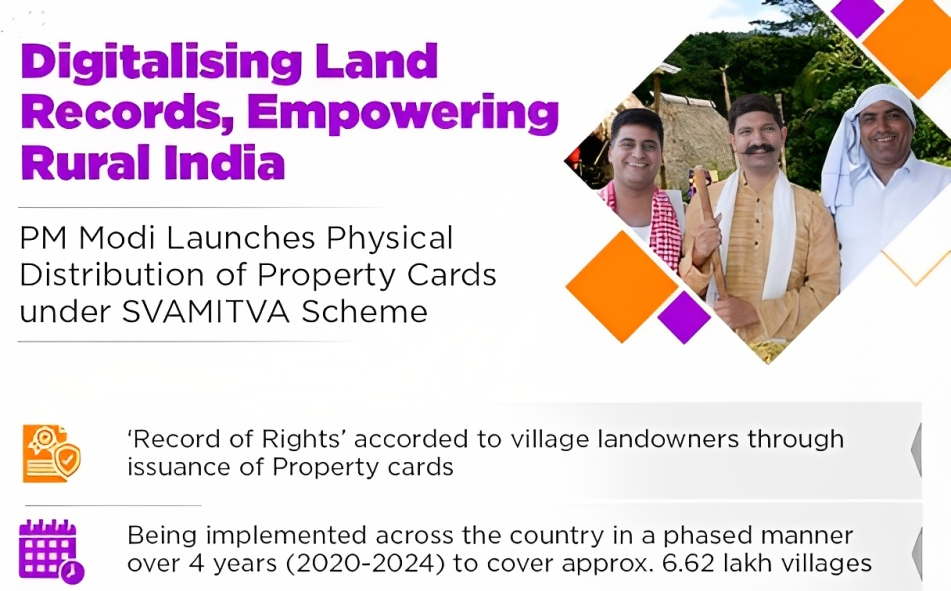Free Courses Sale ends Soon, Get It Now


Free Courses Sale ends Soon, Get It Now



Copyright infringement not intended
Context: On April 24, National Panchayati Raj Day, the Prime Minister digitally handed over about 20,98,926 'gharaunis' to Uttar Pradesh beneficiaries under the Pradhan Mantri Svamitva Yojana (which aims to establish clear ownership of property in rural areas).
SVAMITVA scheme
About
Objectives
Components
Challenges
Lack of awareness and participation
Technical and operational issues
Legal and institutional barriers
Social and Environmental Concerns
Suggestions
Conclusion
Must Read Articles:
SVAMITVA Scheme: https://www.iasgyan.in/daily-current-affairs/svamitva-scheme-48
PM Awas Yojana: https://www.iasgyan.in/daily-current-affairs/pm-awas-yojana-32
|
PRACTICE QUESTION Q. What are the main challenges and limitations of using drones for surveying and mapping rural lands under the SVAMITVA SCHEME? Discuss with reference to the legal, technical, social, and environmental aspects of drone-based mapping. |
© 2024 iasgyan. All right reserved